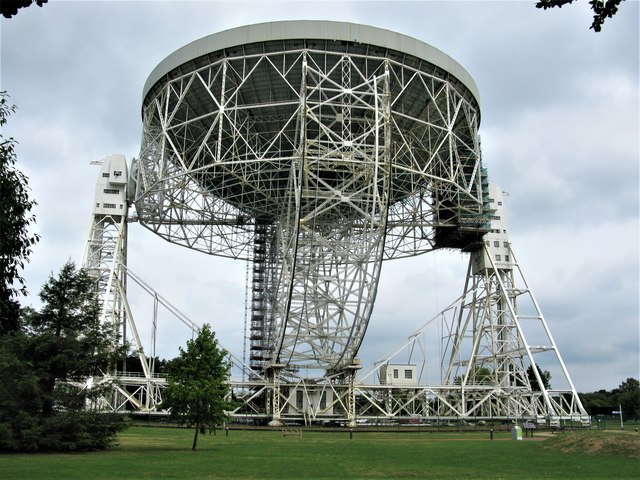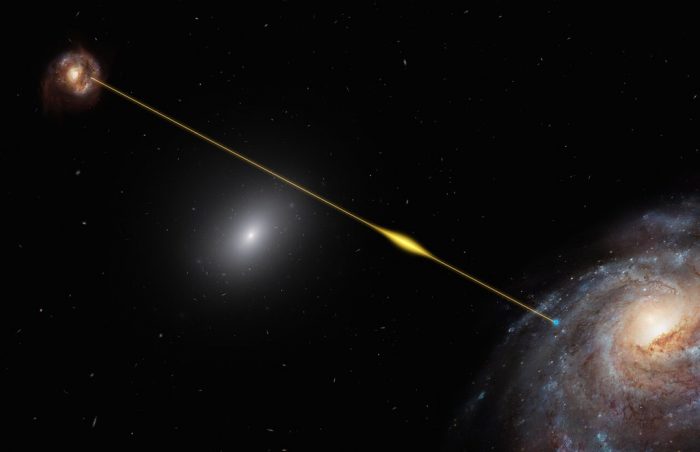Canberra: A five-year long research has found one of the greatest mysteries of the astronomy. The research says that a repeating pattern is found in radio signals coming from a dwarf galaxy about 3 billion light years from earth. Scientists have been studying ‘Fast Radio Bursts’ (FRB), that has become one promising area in astrophysics. Very short, but bright radio pulses – FRBs – were detected for the first time in 2007 by the Parkes radio telescope in Australia.
These massively energetic flares of radiation in the radio spectrum last for just a few milliseconds. Mostly they happen once. Although several thousand FRBs are thought to be coming in from deep space every day, and from every direction, there are two that are particularly interesting—FRB 121102 and FRB 180916.J10158+56. These two FRBs keep repeating. First noticed in 2014 by the Arecibo radio telescope in Puerto Rico, FRB 121102 was detected again in 2016 to make it the only such signal that had occurred more than once. This observation forced astronomers to reconsider the theory that FRBs are one-off events related to stars exploding as supernovas, or other cataclysmic events.

After the FRB121102, sixteen more such repeating ones were discovered. Now a massive radio telescope in the U.K.—the just re-opened Jodrell Bank Observatory in Cheshire—has revealed exactly what’s going on with FRB 121102 by detecting a further 32 bursts over five years that, crucially, appear to repeat in a pattern. An international team led by Jodrell Bank astronomers used the iconic 76-meter Lovell Telescope, and have a new paper on their long-term radio monitoring campaign published this week in the Monthly Notices of the Royal Astronomical Society.
The team discovered that each radio burst from FRB 121102 lasted approximately 90 days followed by a silent period of 67 days. The same behaviour then repeats every 157 days. No underlying pattern in the repetition had previously been identified, and it means astronomers are now able to predict when FRB 121102 will be ‘on’ or ‘off’. This could lead a profound insight to the origin of FRBs. The scientists are in assumption that these bursts may be due to the Orbital motion of a massive star, or a neutron star or even a black hole. They give only a very little chance to the possibility of aliens causing these bursts.
“This is an exciting result as it is only the second system where we believe we see this modulation in burst activity,” said Dr. Kaustubh Rajwade at The University of Manchester, who led the new research. “Detecting a periodicity provides an important constraint on the origin of the bursts and the activity cycles could argue against a processing neutron star.” A neutron star is the collapsed core of a giant star, the result of a supernova explosion. It was thought that a wobbling axis of a neutron star (think of a spinning top) could be the cause of FRB 121102, but the new data suggests that’s not the case. “This exciting discovery highlights how little we know about the origin of FRBs,” said Duncan Lorimer, Associate Dean for Research at West Virginia University. Along with PhD student Devansh Agarwal he helped develop the data analysis technique that led to the discovery. “Further observations of a larger number of FRBs will be needed in order to obtain a clearer picture about these periodic sources and elucidate their origin.”




![The Top & Most Popular Seafood Bucket Restaurants in Dubai for you [Never Miss]](https://uae24x7.com/wp-content/uploads/2020/09/8-seafood-in-a-bucket-scaled-e1600739237403.jpg)
![Procedures for Renewing the Driving License in Abu Dhabi [3 Simple Steps]](https://uae24x7.com/wp-content/uploads/2020/07/Capture-9-e1595666454466.jpg)





